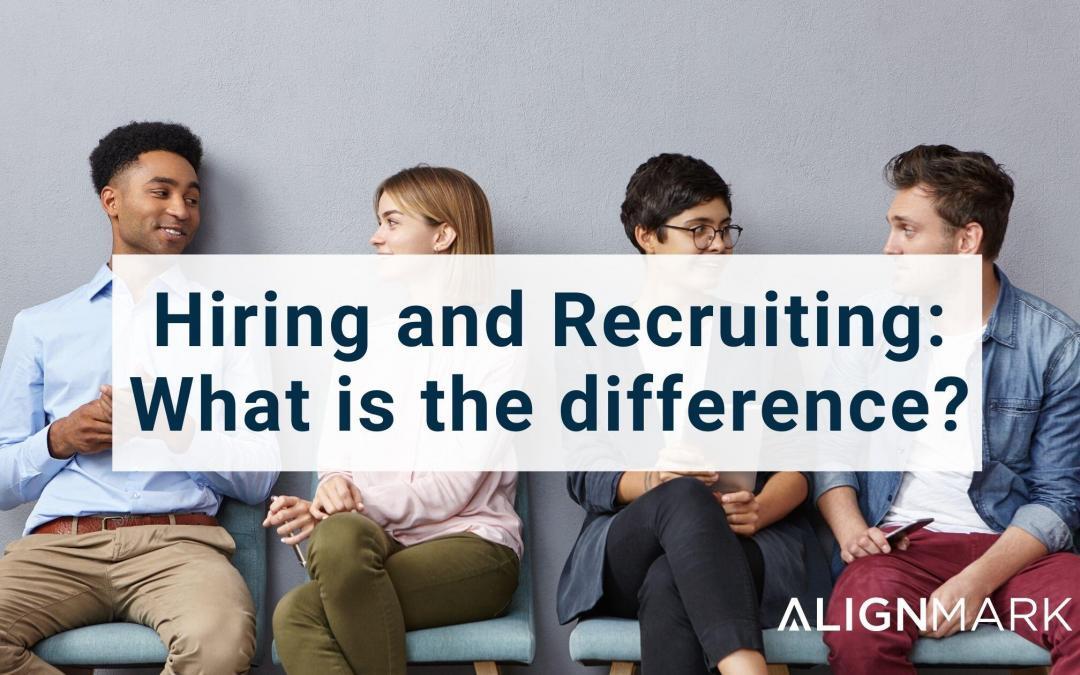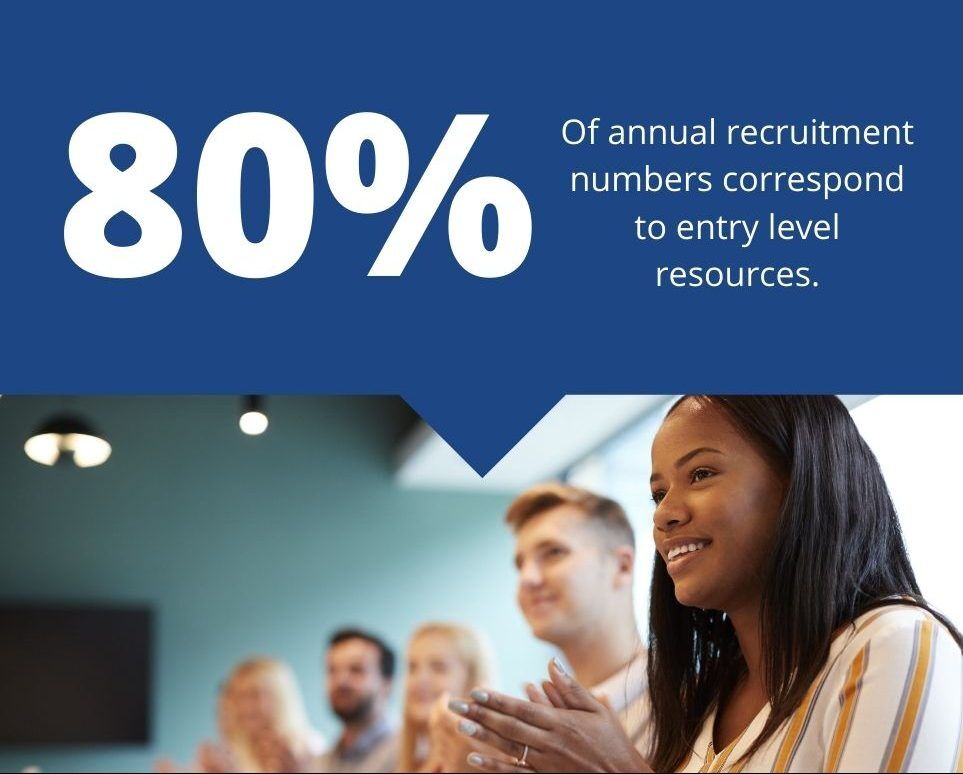Table of Contents
What is the difference between hiring and recruiting?
The terms hiring and recruiting are often used interchangeably but they are actually quite different in meaning. Seth Godin, the marketing “GURU” and author of the book The Purple Cow provides a succinct difference between the terms recruitment and selection.
“Hiring is what you do when you let the world know that you’re accepting applications from people looking for a job. Recruiting is the act of finding the very best person for a job and persuading them to stop doing what they’re doing and come join you.”
- Hiring is easy and fast and is basically a retail operation.
- Recruiting is artful and slow and is essentially a direct marketing effort.
Why does it matter to differentiate the two?
Organizations in fact, do both hiring and recruiting. But it is important that you know the difference between the two to get the most out of your hiring process. According to Business.com, recruitment is a long-term strategy that involves building and sustaining a pool of exceptional candidates so you can have options in place long before an opening appears.
For passive job seekers, recruiting raises the bar because it demands you have a job worth quitting for. The recruiter does not solve an urgent problem for the person being recruited, in fact, they create one. That person already has a job (hence no problem). The problem being created by the recruiter is that until they change over to your job, they don’t even know what they might be missing out on. The recruiter needs to essentially sell the job they are recruiting for as so good that the candidate will want to leave their current job. That is a huge hurdle for a recruiter to overcome, which leads to this key question:
“Is your job opening so good you could recruit great people for it?”
While it is good to understand the difference between recruiting and hiring, most recruitment resources are under immense pressure to ensure that the right candidates apply for the job opening. And with good reason, hiring an unqualified candidate is costly to an organization. Given today’s speed of business and volumes involved in recruitment, the entire process of hiring compares to a typical sales process where the focus is on numbers and not on quality of hire. It is important that Recruitment Managers and the Business heads conduct periodic reviews of the pre-employment assessment of the candidate and compare the same with performance reviews and ratings. This would give the organization a broader understanding of the efficiency of the recruitment process in a qualitative manner, there by providing the management a deeper understanding of why skill and competency gaps exist in the organization.
Levels of Recruitment
Organizations are built like the proverbial pyramid and 80% of annual recruitment numbers correspond to entry level resources. To ensure that demand does not overshoot the supply of such skilled resources, many organizations today follow various processes to hire employees. They can include strategies such as job fairs, campus recruiting, and finding people currently working with experience.
Assessments and Interviews to aid in the Recruitment Process
There are various pre-employment assessments that help to ensure that you are recruiting the right candidate. This could range from aptitude and skill-based assessments to full blown assessment centers along with psychometric tests. Structured interviews should be an integral part of any recruitment process and the rigor associated with the same, ensure highly comparable and objective measurement of a candidate’s skills and abilities.
The Challenge with Recruiting
Most organizations today face the problem of dearth of specific skills and competencies across a specific Business Unit or Management level. While competency mapping and performance reviews help identify existing skills and abilities of employees, they still do not address the immediate and real problem of having someone with the necessary skills to ensure the business is not adversely affected. Most organizations today respond to such situations by creating a Job Requisition and ensuring that someone with suitable skills is put in place to bridge the gap.
What organizations and Recruitment functions fail to see is that after a certain period, which may vary from business to business, another competency gap will be created, and the entire cycle will repeat from scratch. It is important that businesses evaluate employees on a periodic basis, but it is even more important that the same be compared with the employee’s pre-hire evaluation. This would provide the business and HR with vital data on how much off tangent were they in evaluating the candidate and could help them take suitable steps to mitigate the risk in future.
Integrated HR systems which captures information right from initial assessments and interview feedback till the time an employee exits the organization, provides the HR team with actionable and reliable information that can be used to better the process of recruitment, as well as employee performance, thereby ensuring that the recurring cost associated with continuous recruitment can be reduced.
For a better understanding or more information on this topic please do not hesitate to contact us about Recruiting or you can read one of our related blog posts below.
Related resources: Best Hiring Practices: Top Questions Answered
Related blog: 5 Effective Ways of Attracting Top Performers
This blog has been revised. It was originally posted on 5/24/10


 Dr. Jaffee (M.A., Ph.D.) is a recognized expert in the field of assessments, and has created effective HR Solutions used by millions of people.
Dr. Jaffee (M.A., Ph.D.) is a recognized expert in the field of assessments, and has created effective HR Solutions used by millions of people.